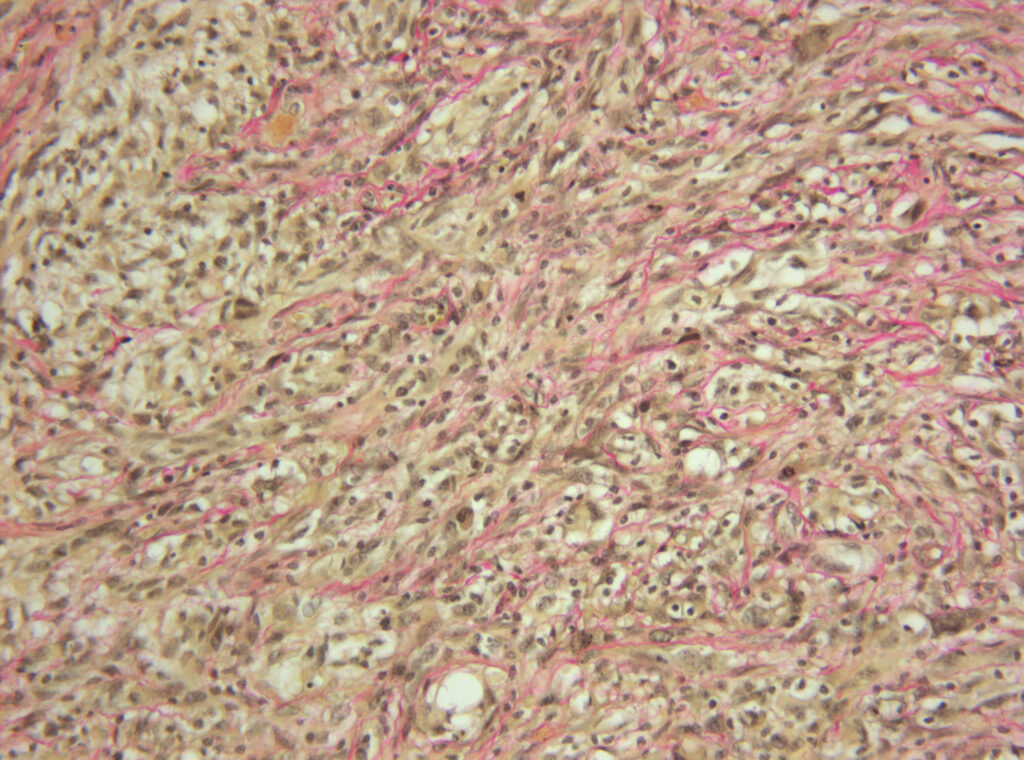Gliosarcoma

Contact Us
Related Videos :
Frequently Asked Questions :
1. What is the prognosis for gliosarcoma?
The prognosis for gliosarcoma varies based on tumor grade, location, and treatment response. Early detection and aggressive treatment can improve outcomes.
2. Is gliosarcoma hereditary?
While most gliosarcoma cases are not hereditary, certain genetic syndromes can increase the risk. Discuss your family history with your healthcare provider.
3. Can gliosarcoma be prevented?
There is no known way to prevent gliosarcoma. However, minimizing exposure to known risk factors, such as radiation, may help reduce risk.

About Gliosarcoma
Gliosarcoma is a rare and aggressive type of brain tumor that arises from glial cells, which support and protect neurons in the brain. This tumor is characterized by its biphasic nature, containing both glial and sarcomatous components. Gliosarcomas primarily occur in adults and can affect any part of the brain. Early diagnosis and treatment are crucial for improving outcomes.
Causes of Gliosarcoma
The exact cause of gliosarcoma remains unknown, but several factors may contribute to its development, including:
- Genetic Mutations: Certain genetic predispositions may increase the risk.
- Environmental Factors: Exposure to radiation or toxic substances could play a role.
- Age and Gender: Most cases occur in adults, with a slight male predominance.
Understanding these potential causes can help in early detection and prevention strategies.
Types of Gliosarcoma
Gliosarcomas can be classified based on their cellular components and location within the brain:
- Primary Gliosarcoma: Develops de novo without a preceding tumor.
- Secondary Gliosarcoma: Arises from pre-existing gliomas.
- Histological Variants: May include different grades based on cellular characteristics.
Symptoms of Gliosarcoma
Patients with gliosarcoma may experience a range of symptoms, which can vary based on tumor location. Common symptoms include:
- Headaches
- Seizures
- Cognitive changes (memory loss, confusion)
- Motor skill difficulties
- Vision or speech problems
Recognizing these symptoms early can lead to timely diagnosis and treatment.
Diagnosis of Gliosarcoma
The diagnosis of gliosarcoma typically involves several steps:
- Medical History and Physical Examination: Assessing symptoms and health background.
- Imaging Tests: MRI and CT scans are crucial for identifying the tumor and determining its size and location.
- Biopsy: A tissue sample may be obtained to confirm the diagnosis through histopathological examination.
These diagnostic methods ensure an accurate and timely identification of gliosarcoma.
Treatment Options for Gliosarcoma
The treatment of gliosarcoma is often multidisciplinary and may include:
- Surgery: The primary treatment to remove as much of the tumor as possible.
- Radiation Therapy: Used post-surgery to kill remaining cancer cells.
- Chemotherapy: Administered to target and eliminate cancer cells.
A personalized treatment plan is essential, as it depends on various factors, including tumor size, location, and patient health.
Cost of Treatment and Stay in India
The cost of gliosarcoma treatment in India can vary widely based on factors such as hospital choice, treatment type, and duration of stay. On average, patients can expect to pay between $5,000 to $20,000 for comprehensive treatment, including surgery, chemotherapy, and follow-up care.
Stay in India: Many international patients choose to stay for at least 2 to 4 weeks for treatment and recovery, depending on individual needs and treatment plans.